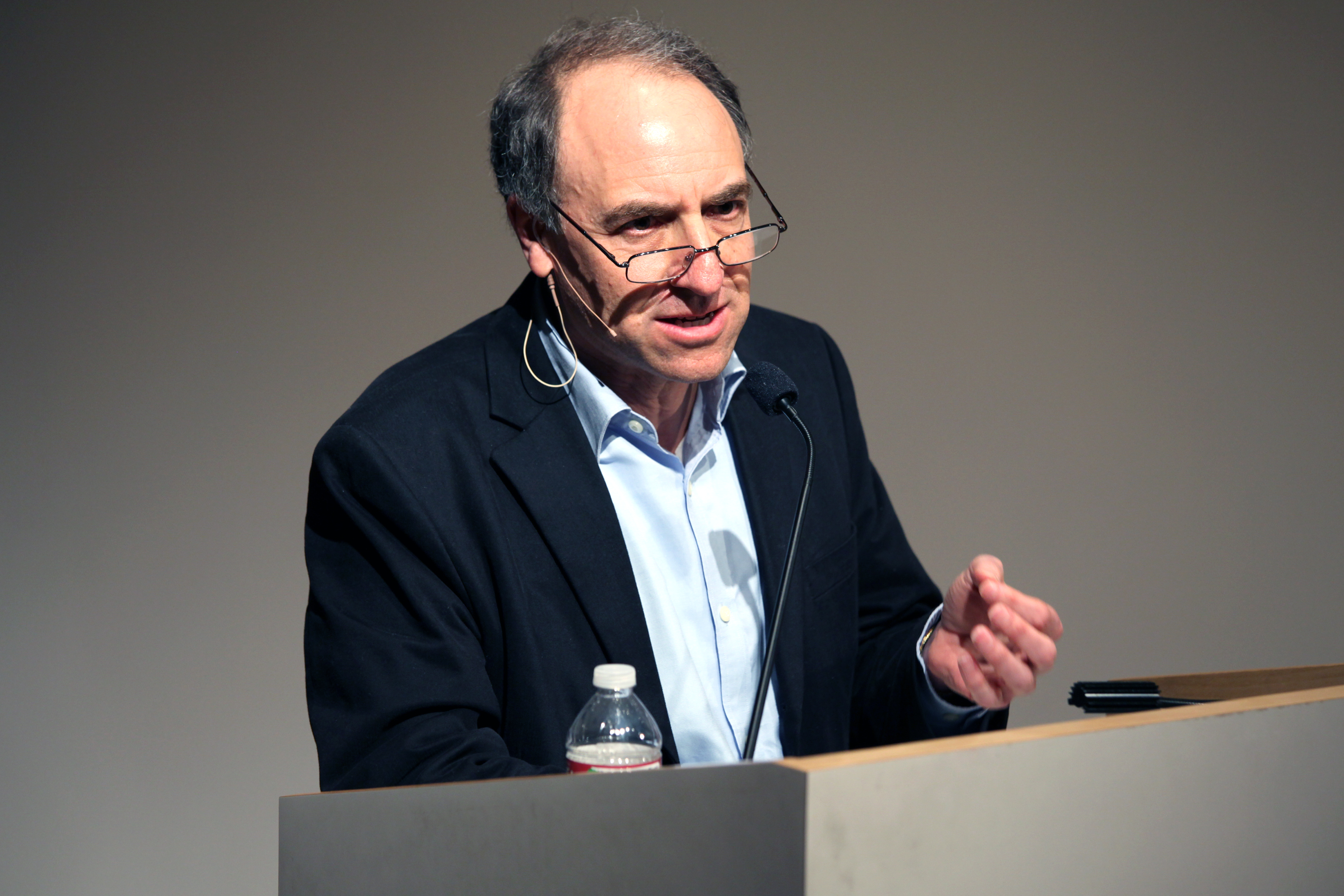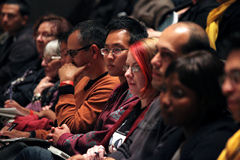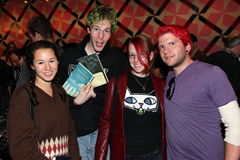
Peter Lovenheim’s project of sleeping over at his neighbors’ homes had an inauspicious start.
“The night I left for my first sleepover,” he said, “my then-14 year old daughter Valerie saw me about to go out the front door and said ‘Dad, you’re crazy!’”
But Lovenheim persisted, eventually spending the night at the homes of the families on his street in suburban Rochester, N.Y. The result was his book In the Neighborhood: The Search for Community on an American Street, One Sleepover at a Time, which was awarded Zócalo Public Square’s first annual book prize at the Museum of Contemporary Art on Friday evening. Several years after writing the book, he remains convinced it was an quite reasonable idea.
“That it’s entirely acceptable to live side-by-side, driveway to driveway with other people for years, sometimes decades, without knowing anything about them – that I think is crazy,” he said.
Finding Meaning in Tragedy
 It took a tragedy to motivate Lovenheim to meet his neighbors. An unhappy marriage resulted in a murder-suicide on his block.
It took a tragedy to motivate Lovenheim to meet his neighbors. An unhappy marriage resulted in a murder-suicide on his block.
“One night the husband came home and shot and killed his wife and then himself,” he explained. The couple’s two children moved across town to live with their grandparents. And with that, “a whole family who had lived on my street for seven years vanished overnight.”
The most troubling part, Lovenheim said, was that nothing changed about life in the neighborhood. None of the residents of his street had known the family beyond waving hello, so when they were gone it was like they had never existed.
News accounts later revealed that the woman had been scared of her husband and had called her best friend, who lived in another part of town, three times that day, only to find her out of town on business. Her husband disabled her cell phone and car, so she had no escape.
“Her options were limited to going to any of the other 35 houses on our street, but she didn’t do that,” he said.
Sharing Breakfast
 It was then that Lovenheim decided he needed to get to know his neighbors, but he wasn’t sure how. Then he remembered how much he loved sleeping over at his friends’ homes as a kid.
It was then that Lovenheim decided he needed to get to know his neighbors, but he wasn’t sure how. Then he remembered how much he loved sleeping over at his friends’ homes as a kid.
“The part I liked best was not the sleeping over, it was the waking up the next day and going downstairs for breakfast and sitting around the breakfast table with my friend’s family who previously were strangers to me,” he said. “The next time I’d go over to my friend’s house I found it didn’t feel like a strange place anymore.”
Lovenheim figured that approach would work with his neighbors as well, but he didn’t go in cold. With each family, he emailed or called first, setting up a meeting at Starbucks. After a few of these sessions, he would follow with the request for a sleepover.
The first person to take him up on the offer was Lou Guzzetta, an 81-year-old widower. Guzzetta gave Lovenheim a nightshirt – “better than pajamas,” he told him – and made him breakfast. But, as Lovenheim hoped, the relationship between the two men didn’t end when the sleepover did. Today, Lovenheim said, Guzzetta is a father figure to him.
Creating Community
Eventually, Lovenheim decided to push his project a step further than he had initially planned. Three doors down from his house lived Patti DiNitto, a newly divorced mother of two young daughters who had been diagnosed with breast cancer. Could Lovenheim’s efforts to unite the neighborhood actually lead to people helping DiNitto?
Indeed they did. Guzzetta began driving the woman to appointments and the grocery store. A few other people stopped by to chat, or helped take care of her children. The effort cheered Lovenheim, who still remembered hearing that the woman who had been killed by her husband had tried to call her best friend, who was out of town.
“We’re all mortal, we’re all subject to health emergencies,” Lovenheim said. “There are times when a friend even ten minutes away is too far away.”
What Makes a Good Neighbor?
 Though Lovenheim said at the beginning of his talk that he didn’t have the academic background to know what a neighbor should be, he offered several suggestions for what people can do to be a good neighbor. They should start by getting to know people around them and taking advantage of what those people have to offer, he said.
Though Lovenheim said at the beginning of his talk that he didn’t have the academic background to know what a neighbor should be, he offered several suggestions for what people can do to be a good neighbor. They should start by getting to know people around them and taking advantage of what those people have to offer, he said.
One woman in Lovenheim’s neighborhood was a skilled pianist in her mid-80s.
“If we had only known her, maybe she could have given piano lessons to the kids in the neighborhood … but at that point it was nearly too late,” he said.
And even people who don’t have a particular skill to teach can lend a hand.
“All our resources are finite; if somebody is baking a cake at night and sends their spouse to the supermarket to buy a 6-ounce bottle of vanilla, that’s just wasteful,” Lovenheim said. “Better to borrow the vanilla or a cup of sugar or lawn equipment.”
The neighborhood, he said, is designed to be a building block of a healthy society, and research shows that people who feel connected to each other tend to be happier.
“A good neighbor is somebody who is willing to be at least a little dependent on each other … to have each others’ backs,” he said. “And the good news is, you don’t have to sleep over to do it.”
For event photos, please click here.
For full video, please click here.
* Photos by Aaron Salcido




Send A Letter To the Editors